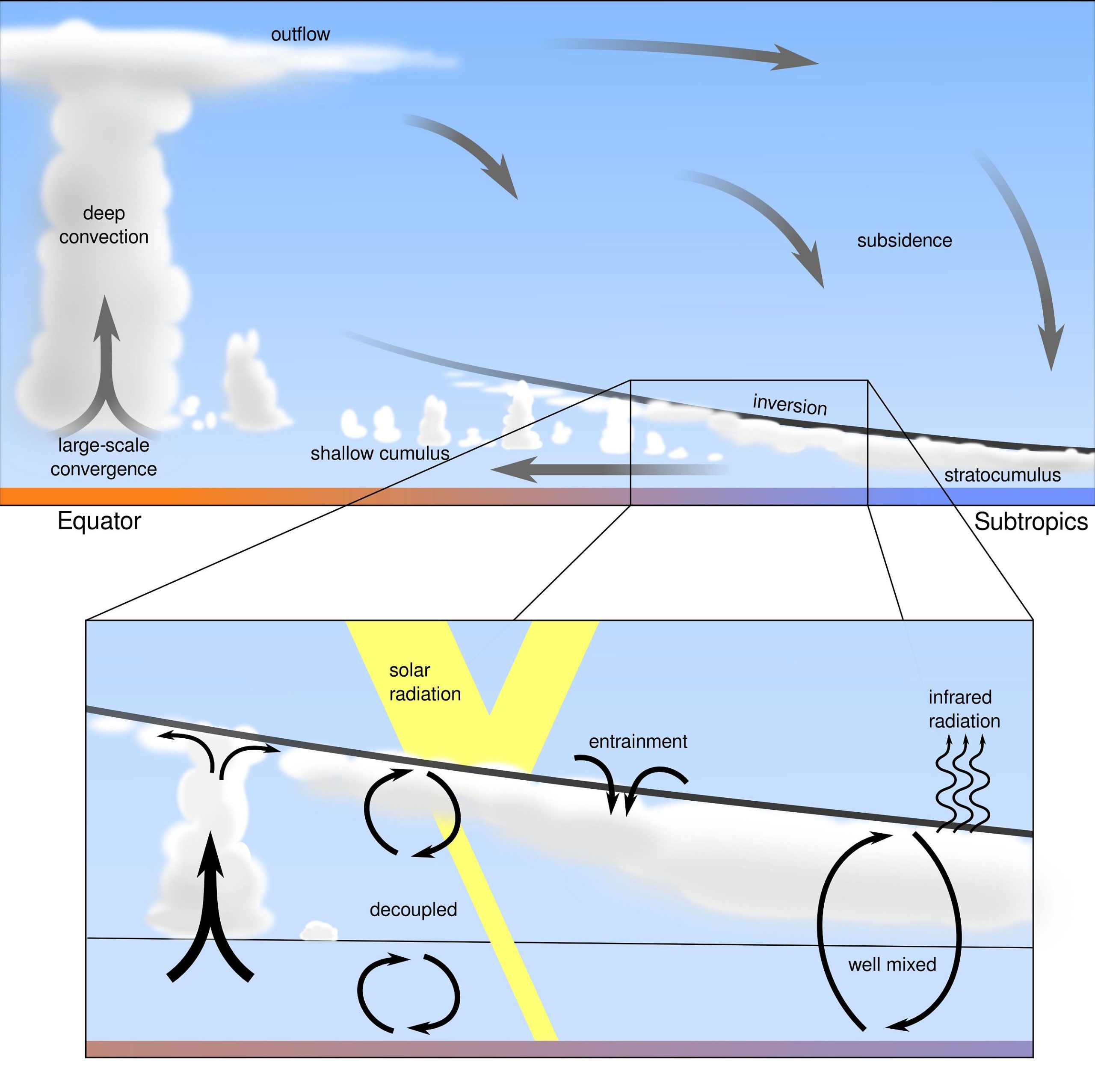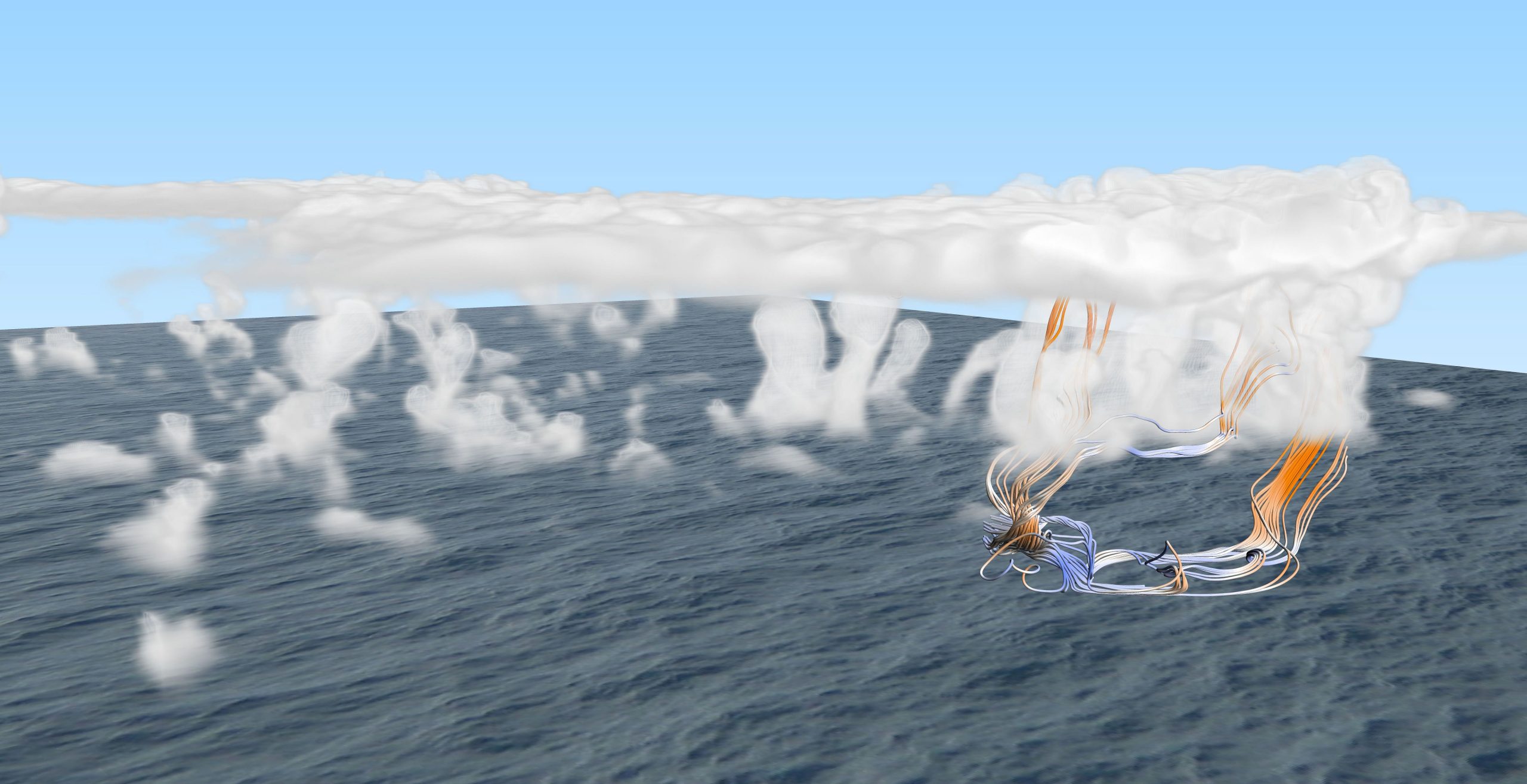What happens to the large swaths of clouds in the subtropics when the climate gets warmer? Physicist Johan van der Dussen saw them dissolve in his ultra-realistic simulations.
Clouds have long been the elephant in the room for climate modellers. Clouds can have enormous surfaces which reflect sunlight away from the earth, making them a potentially important factor in climate change. However, most scientists do not like to address the clouds issue because different climate models do not agree on the influence of a warmer climate on cloud cover. Consequently, various climate models diverge quite a bit in their temperature forecasts.
Cloud simulations in the Atmospheric Physics group of Professors Pier Siebesma and Harm Jonker (The Faculty Civil Engineering and Geo Sciences) have reached such a level of detail that it can simulate cloud formation and transitions with confidence. Physicist Dr. Johan van der Dussen ran the cloud simulation software on the Sara supercomputer in Amsterdam.
Van der Dussen focussed on the stratocumulus clouds (extensive low-hanging grey clouds associated with dull weather) over the sea in the subtropics. They cover an enormous surface area and shield large stretches of the ocean from the sun. The other reason for studying subtropical stratocumulus is that as these clouds drift towards the equator, they tend to get thinner, break up and give way to cumulus clouds (the fluffy sheep-like clouds). These clouds provide less cover than the stratocumulus layer. The typical transition from a closed layer to separate clouds used to be too computationally heavy to simulate. Earlier simulations focussed on one of the two types but shied away from the transition.
Van der Dussen first compared the outcome of the simulations with atmospheric measurements. He concluded that the computed clouds were realistic beyond expectation. The processes of the thinning of the stratocumulus, the breaking up and the formation of cumulus clouds underneath the stratocumulus layer perfectly matched what happens in the atmosphere.
Next, he simulated the same process in a future world where both sea and atmosphere were two degrees warmer than today. His colleague Dr. Sara dal Gasso had already shown that stratocumulus clouds would get thinner in a warming climate (resulting in increased warming).
Van der Dussen repeated the simulation in high resolution to disentangle the processes involved. He showed that the thinner clouds would start dissolving sooner and giving way to the distributed cumulus clouds. His conclusion is the same as Dal Gasso’s: less cloud cover in a warming climate leads to increased warming.

There is a counter effect, however. In a warming climate, the large-scale circulation from air rising in the tropics and pushing down in the subtropics (known as the Hadley circulation) will diminish. So, the winds pushing the stratocumulus towards the tropics will decrease, slowing down the transition from stratocumulus into cumulus clouds. However, the overall effect of climate change on subtropical clouds is still an amplification.
–> Johan van der Dussen, Stratocumulus Transitions in Present-day and Future Climate, June 22, 2015, Ph.D. thesis supervisors Prof. Pier Siebesma and Dr Stephan de Roode (CEGS faculty)



Comments are closed.